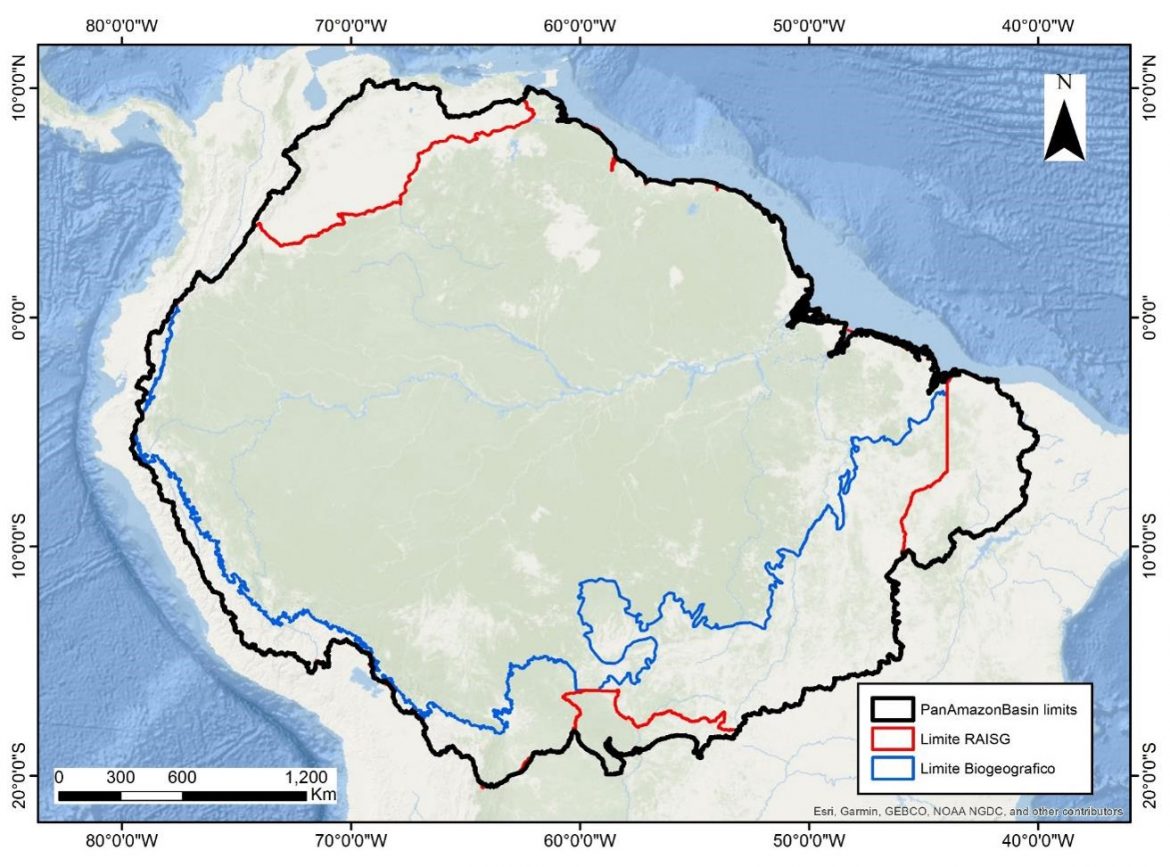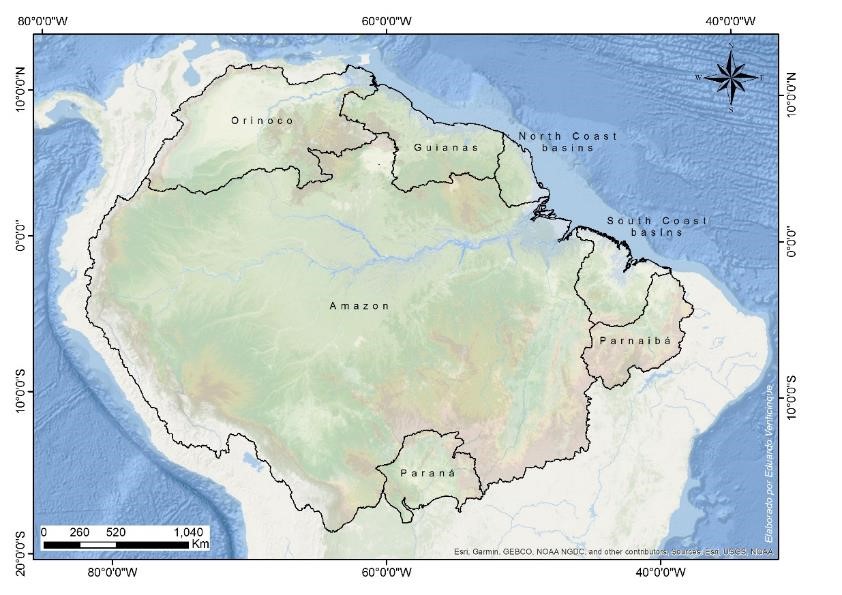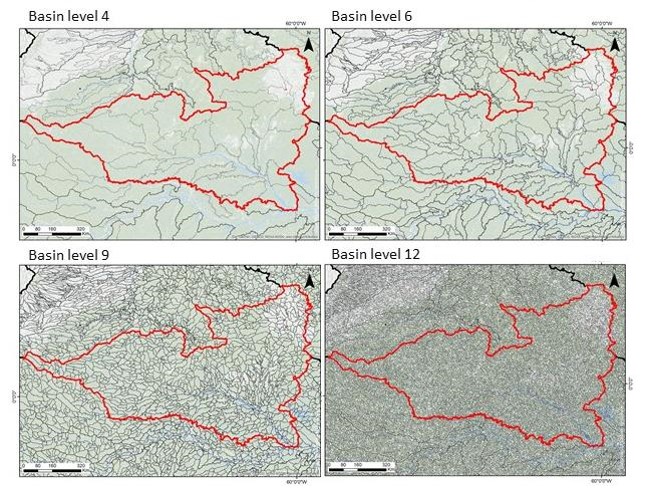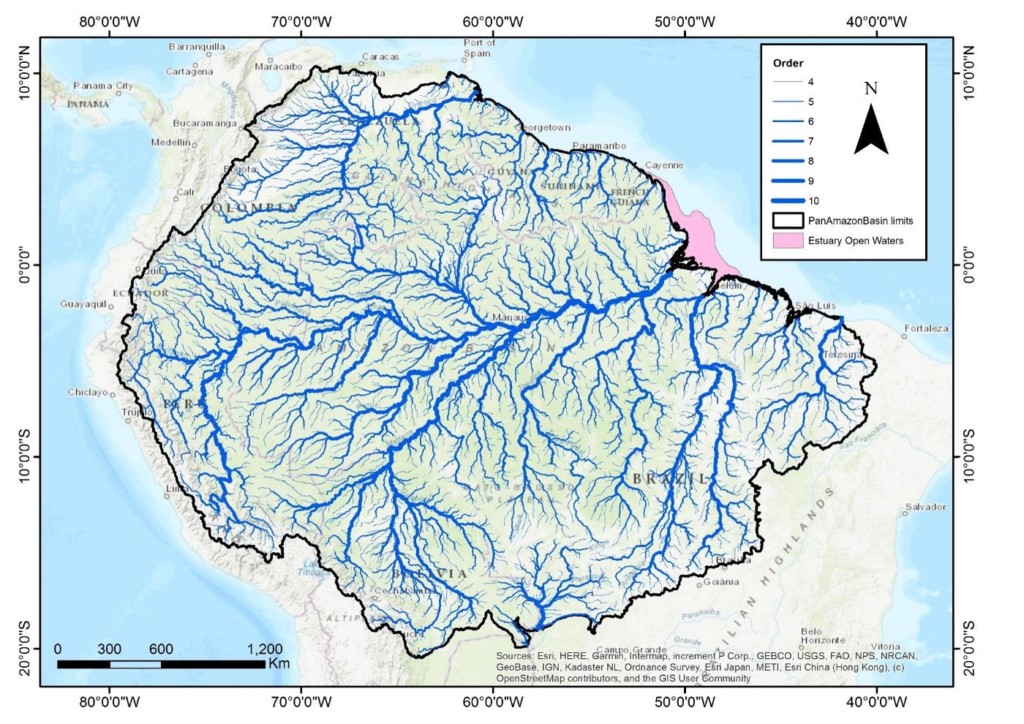
A spatial framework for the conservation of the aquatic ecosystems in the Amazon-Orinoco-Guianas region
The Amazon is one of the world’s biodiversity homes and provider of a number of key ecologic processes and services for mankind. With a total of 7.3 million km2, it is the largest tropical region in the world containing the greatest river network in the planet. For this reason, its global influence in the hydrological and climatic dynamics provides a valuable percentage of 15%[1] freshwater discharge into the oceans of the world, as well as its forests[2], a really gigantic carbon storage and one of the most critical elements in the temperature reduction of the Earth.
In addition, just considering, for example, the Brazilian Amazon territory, 20 million inhabitants, constituted by 385 indigenous and tribal communities[3], may be quantified. There are 8 countries (Bolivia, Brazil, Colombia, Ecuador, French Guiana, Guiana, Peru and Venezuela) sharing part of the Amazon, and their communities are inter-connected with this territory, which makes it still richer in its global cultural diversity. However, due to the poor management of the resources and infrastructure at appropriate scales, its future is put at serious risk. The anthropic pressure resulting from the financial system, affect its sustainability tremendously, overfishing, agro-industrial expansion, deforestation, construction of hydroelectric plants, mining exploitation, lack of unified management of the territory, among other, fostering the conditions for national and international criminal increase and threats to all ecosystems at the same time.
In order to preserve the ecological integrity of the Amazon Basin, the wildlife and the well-being of the communities depending on it, an integrated basin management is necessary, with an ecosystems-based approach. A first basin classification based on ecosystems precisely arose as a tool/solution to integrate/articulate a perspective in the Amazon Biome within the basins system and it was published in 2016. The article of Venticinque et al. (2016) represents an ecological point of view of the basins, defining them according to the flooding pulse and its effect over connectivity, functioning and preservation of the Amazon aquatic and semi-aquatic habitats.
Since its publication, this classification was successfully used for diverse and multiple-scale preservation and management objectives, however, a very important challenge for its implementation was that the scope did not cover the entire Amazon Biome. The new Pan-Amazon basins classification (Eduardo Venticinque, Bruce Forsberg, Ronaldo Barthem, and Michael Goulding, 2021) addresses this challenge, and offers a useful spatial reduction to make integrated analysis of the aquatic, semi-aquatic and land systems at the Amazon Biome scale, or at different hydrographic scales, such as a specific basin. This spatial framework may be particularly useful for a great variety of users in the investigation, evaluation and monitoring of the aquatic and semi-aquatic systems, not only due to the hierarchy of the basins, but also to the outstanding position granted to the regions accredited under the category of “Main Stem’’ that contain the flood areas along the big rivers and basins of small water flows located in solid ground but under the pulse influence of flooding.
The most important improvements of the Pan-Amazon basins classification (Venticinque et al. 2021) are:
1) The spatial coverage extension now includes the entire Amazon biome and the Amazon, Tocantis, Guianas, Orinoco, Paranaiba, headwaters of the Parana River basins and coast basins north and south of the Amazon River.
2) The number of hierarchical basin levels increased with the new classification to 12 levels (instead of 7 under the previous classification.) This database is constituted by a hierarchical system of 12 hydrographic basins that is now formed by 142.572 basins in the most detailed level (BL 12).
3) The new basins classification is now based on a digital model with a better capacity to create the drainage network and outline the basins in the flooded or very plain areas, the DEM-MERIT (Yamazaki et al 2019).
4) The improved basins classification includes an excellent definition of the coast basins and a substantial improvement of the semi-automatic edition of the basins.
Following the principles of Open Science, this new basins classification has free access and is available at:
-Extended database at the following DOI ,
-Maps: maps maybe downloaded here.
—
Refferences:
-Eduardo Venticinque, Bruce Forsberg, Ronaldo Barthem, and Michael Goulding. 2021. Pan-Amazon Basins: A spatial Framework for the Conservation of Aquatic Ecosystems in the Amazon-Orinoco-Guianas Region. urn:node:KNB. doi:10.5063/BG2MDZ DOI .
-Yamazaki D., D. Ikeshima, J. Sosa, P.D. Bates, G.H. Allen, T.M. Pavelsky. MERIT Hydro: A high-resolution global hydrography map based on latest topography datasets Water Resources Research, vol.55, pp.5053-5073, 2019, [doi:10.1029/2019WR024873] https://doi.org/10.1029/2019WR024873
-Dissemination Manual: A new GIS-Based river basin Framework https://doi.org/10.19121/2021.Report.40050
—
[1] “Humid tropical forest clearing from 2000 to 2005 quantified by using multitemporal and multiresolution remotely sensed data” (2008). Matthew C. Hansen, Stephen V. Stehman, Peter V. Potapov, Thomas R. Loveland, John R. G. Townshend, Ruth S. DeFries rdefries@mail.umd.edu, Kyle W. Pittman, Belinda Arunarwati, Fred Stolle, Marc K. Steininger, Mark Carroll, and Charlene DiMiceli. (Fecha de consulta 29 de Marzo de 2022) Consultado en: http://www.pnas.org/content/105/27/9439
[2] Executive Summary, Science Panel for the Amazon, Amazon Assessment Report 2021. https://www.theamazonwewant.org/wp-content/uploads/2021/09/SPA-Executive-Summary-11Mb.pdf
[3] Organización del Tratado de Cooperación Amazónica (OCTA). (2014). El cambio climático en la región amazónica: Acciones de la Organización del Tratado de Cooperación Amazónica. Brasilia: Organización del Tratado de Cooperación Amazónica . p. 5






